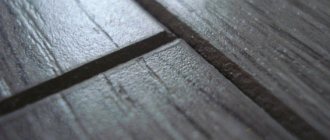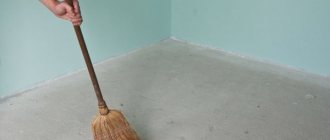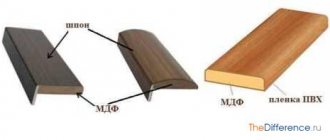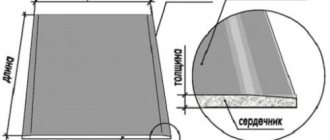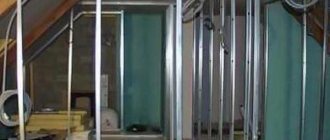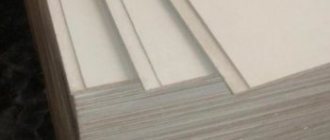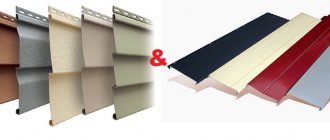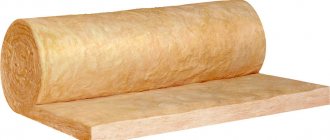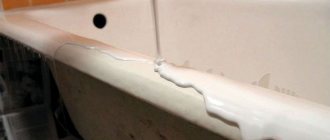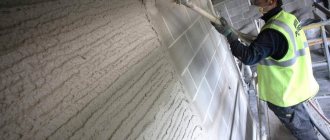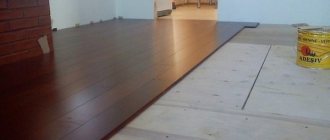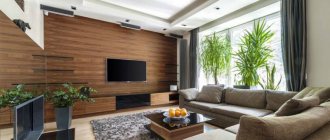Manufacturers of building materials have recently, unwittingly, often misled consumers. For example, people who are not involved in construction almost always associate a parquet board that comes on sale with classic (piece) parquet. Therefore, when renovating apartments, owners need to know not only what the difference is between laminate and parquet, but also how piece parquet differs from parquet boards. After all, these are completely different materials, both in consumer properties and in price. Let's try to clarify the terminology, and then consider what the difference is between laminate and parquet boards.
Description of parquet, parquet boards and laminate
Parquet is understood as a floor covering made of hard wood in the form of planks (rivets) with locks for fastening, which consist of a tongue and groove . The sizes of the boards vary in thickness from 14-22 mm, length - from 20 to 70 cm, width from 50 to 90 mm (more detailed information about this type of floor is given in the work “United parquet”).
Parquet board is a three-layer floor covering glued together from wooden segments, the fibers of which are located perpendicular to each other.
The transverse arrangement of layers allows you to increase the strength of the board, resistance to moisture and temperature fluctuations (less linear expansion). There are locks on the sides of the board, like block parquet.
The top layer (in photo 1) is glued from valuable wood species (oak, ash, beech, cherry, etc.).
The middle layer (in photo 2) is load-bearing, assembled from technical grades of wood spliced under pressure (mainly birch).
The lower, stabilizing layer (in photo 3) is made of coniferous species, mainly pine in Russia and spruce in Europe.
Almost all manufacturers coat their products with a wax-oil composition or varnish, which reduces the time and resources for impregnating the flooring with parquet varnish and polishing it. The dimensions of the board are less variable than those of block parquet: the width (230 mm) and thickness (20 mm) are fixed, the length ranges from 1505 mm to 2425 mm (see photo).
Laminate is a structure glued together from several layers of different materials. A transparent film made of acrylic or melamine resin covers the top of the “sandwich” (in Fig. 1). It performs two functions:
- protects the decorative layer from mechanical damage and ultraviolet rays (sunburn);
- serves as the basis for applying wood texture, resulting in a textured surface that imitates natural wood.
The second, decorative layer (in Fig. 2) consists of paper impregnated with paraffin, or vinyl, with a pattern imitating wood, stone or other material. The vast majority are wood.
The body of the laminate board (in Fig. 3) is made of wood fibers. This can be dry fiberboard of medium or high density (the latter material is called HDF, in English transcription HDF). This part of the structure bears the main functions of the flooring:
- withstands mechanical loads;
- is responsible for the connection between the slats - this is where the locks are cut (in Fig. 5);
- serves as insulation.
The consumer properties of the laminate (moisture resistance) depend on the supporting layer, or rather on its density and the degree of impregnation with moisture-resistant compounds.
The bottom layer (in Fig. 4), also stabilizing, protects the laminate board from deformation. Some manufacturers add a fifth layer by gluing a soundproofing backing.
Concluding the description of flooring materials, we note that in the literature, including Wikipedia, you can find the expression “laminated parquet”. Let us clarify that laminated parquet and laminate are the same material. Laminate.
Let's summarize: the main difference between parquet and laminate and parquet boards is the structure of the material. The first one is solid, the other two are multi-layered.
Sound insulation of flooring
Sound insulation of floor covering (photo No. 7)
This indicator is determined by the properties of the material, as well as the method of its installation. Let's figure out how parquet differs from laminate, which is better?
The noise insulation characteristics of natural wood are higher than those of glued material made from HDF panels. The clicking of heels, shuffling, steps, under all equal conditions, on the parquet board will be less noticeable.
However, in practice, it is “other conditions” that play a decisive role:
- How level is the floor?
- Is there a backing used? And which one?
- What kind of floors are there in the building?
- How much furniture is there in the room (if there is little furniture, the echo effect increases)?
If there is a high-quality substrate, both coatings will be comfortable in terms of noise insulation both indoors and from neighbors below. Vinyl laminate has a backing initially, so it perfectly absorbs sounds without an additional layer.
!
The sound insulation of parquet boards is higher than that of laminate. Laminate compensates for this disadvantage with the help of a backing: it is laid as an additional layer under regular panels and is already included in the vinyl.
Pros and cons of laminate
Analyzing the strengths and weaknesses of laminate, it is necessary to separately dwell on some points.
1. Durability. Sellers and manufacturers of laminate panels note the high durability of their products. The buyer does not have the opportunity to check this indicator in a laboratory. But this can be done empirically: by holding a laminate board in your hand. After all, the strength of MDF depends on the density of the material. And denser substances, as we know from school physics lessons, are heavier.
This was the case until recently, until Chinese companies, followed by Russian ones, began adding heavy additives to MDF. As a result, only products from Europe (Germany, Belgium) have markings that correspond to the declared class. Therefore, a class 33 lamella from a little-known manufacturer may end up with the strength level of a laminate for walls.
2. The use of various research methods for wear resistance and, therefore, durability does not allow us to unambiguously believe the manufacturers’ statements about the service life. The consequence of this approach has been situations where the declared 15 years of operation turn into real 7, and the 10 years indicated on the packaging into 20 or more years of impeccable service.
From the above we can draw the following conclusions:
- high strength and wear resistance are guaranteed only for products from Europe from the upper price sector;
- in the average price sector the probability of buying a fake is close to 50%;
- It is better to avoid buying cheap brands of laminate, since Chinese companies dominate here.
Now let’s look at the proven advantages of laminate flooring :
- the huge selection of panels available in size, color and texture allows designers or homeowners to fit the flooring into any interior design style;
- By using different types of lamella board layouts, you can visually change the dimensions of the room: expand or lengthen;
- assembly technology accessible to non-professional builders;
- the applied protective film prevents fading under ultraviolet rays;
- Laminate flooring does not require complex maintenance: sanding, varnishing or waxing, painting. Dirt is cleaned off with a damp cloth (well twisted) or wet wipes;
- laminate panels can withstand sharp heels, heavy furniture, cigarette ash and cigarette butts without damage;
- Convenient to transport. Can be placed in the trunk of a passenger car;
- withstands increased abrasive loads;
- affordable for a wide range of buyers.
In addition to the listed advantages, in the literature you can find several statements that do not correspond to reality.
- Laminate flooring has a high level of sound absorption. Here everything is exactly the opposite: the floor covering is the most “ringing”.
- It is a good insulator, which is not confirmed by the thermal conductivity indicator: it is high.
Among the disadvantages:
- The presence of 20% formaldehyde resins (HCHO) in the material at comfortable temperatures does not in any way affect human health. Everything changes when the floor temperature rises to 28o and above, which is often observed when installing heated floors, when they do not pay attention to the markings and lay ordinary laminate. The active release of formaldehyde into the air has an extremely negative effect on the owners of an apartment or house;
- low moisture resistance. Active absorption of moisture from the air leads to swelling of individual panels, the replacement of which requires complete or partial disassembly of the floor. Direct contact with water, even for a short period of time, may require complete replacement. And this is significant finance;
The laminate lifted due to water ingress.
- under the laminate you need an almost ideal surface: durable, dry and, most importantly, flat, which places increased demands on the floor screed: the height difference is no more than 3 mm and without a slope. All this significantly increases the cost of preparatory work;
- The ability of laminate to amplify indoor sounds (resonate) does not bring pleasure to either the owners or neighbors. Attempts to solve the problem of sound insulation with a thicker substrate lead to another problem: a thick substrate increases the amplitude of vibrations when walking, which leads to rapid destruction of the locks;
- the material of the protective film accumulates static voltage from operating radio-electronic devices: TV, personal computer, laptop, which leads to the accumulation of dust and discomfort when walking barefoot;
- It is difficult to remove ink, oil paint and grease spilled on the floor surface, and therefore experts do not recommend this type of flooring in the nursery and kitchen;
- wet cleaning increases the likelihood of injury, which few people know about, but trauma surgeons are well aware of;
- in the autumn-winter period, walking on laminate flooring without slippers is extremely unpleasant due to the cold;
- Care is needed when installing heavy furniture. Placing 2 legs on one panel quickly leads to the destruction of the locks.
More information about the cost of materials
The price of laminate slabs consists of several important factors:
- workmanship;
- name and prestige of the manufacturer;
- design load class.
Household coatings of classes 23-31 are cheaper than products of categories 32-33. The latter are intended for office, retail and other premises where heavy loads are placed on the floor surface.
It should be noted that today laminate flooring for parquet boards is also produced. The peculiarity of the material is that it imitates the texture of an expensive wooden covering.
The type of wood used in the manufacture of the top layer of parquet boards affects the price of the final product along with quality and other characteristics.
The most valuable varieties include: cherry, walnut, oak and beech. In addition, the presence of knots and sapwood in the coating reduces the cost of the product, and vice versa, boards with a flat and smooth surface are always valued higher.
Note! Large single-strip planks seriously increase the cost of coating, so the most popular material is a three-strip board.
Laying laminate flooring on a parquet board allows you to quickly and relatively inexpensively replace old worn-out flooring without dismantling it. In this case, you can get a floor that will almost perfectly imitate the previous one.
Parquet board is an environmentally friendly natural material
Advantages and disadvantages of parquet boards
Parquet boards have many advantages, among which it is necessary to highlight the main ones:
- made from natural materials, which eliminates allergic attacks;
- long service life - 35 years or more;
- easy care - wash with a wrung out cloth;
- the surface is restored using a grinding machine, followed by the application of varnish, wax or special oil for wood. The amount of restoration depends on the thickness of the top layer;
- easy to assemble, which allows installation work to be carried out by a beginner in the construction business;
- protects well from indoor and structural noise - natural wood perfectly absorbs sound waves;
- “warm” to the touch, making it comfortable to walk on barefoot at any time of the year;
- most manufacturers provide a 10-year warranty;
- does not accumulate static voltage, as a result of which the floor is not a dust collector;
- does not fade in the sun;
- has a respectable, solid appearance, emphasizing the high status of the owners of the apartment.
Parquet boards also have weaknesses that the consumer should be aware of:
- low moisture resistance, requiring waterproofing work;
- geometric dimensions limit the number of shaped layout options;
- a thin top layer of valuable wood eliminates sanding and limits the number of sandings;
- absorbs odors;
- there is a high risk of material delamination due to the different expansion of each layer under the influence of temperature and humidity (the coefficient of linear expansion is different for different types of wood);
Attention: it is better to refuse to buy Russian-made parquet boards if the compensating layer is made of spruce, due to the different coefficient of thermal expansion. In Europe, this point is taken into account without fail.
- to install flooring you need one manufacturer and one batch of products - there may be strong differences in texture and color;
- you need a well-prepared foundation;
- planks that are poorly lined during installation destroy their own locks over time;
- rapid abrasion of factory varnish;
- it is necessary to maintain the microclimate at the same level - fluctuations in temperature or humidity can lead to warped floors;
- limited number of texture and color options.
The given strengths and weaknesses of the materials being compared do not give a clear answer which is better, laminate or parquet boards, because... In some places laminate is better, in others - board. Therefore, we will continue the comparative analysis by comparing the performance characteristics of the materials.
Appearance
There is no doubt that well-maintained natural parquet will look much more refined and luxurious than laminate. Although, with the development of technology, not every consumer can distinguish a modern laminate floor from a parquet floor. It is not without reason that manufacturers spent a lot of effort to simulate a wood pattern on a laminated board, which has become almost indistinguishable from natural, so in many cases replacing parquet with laminate can go unnoticed.
Traditional parquet is strongly associated in the imagination with strict classical interiors of residential premises or formal halls. Laminate flooring can fit perfectly into both a classic and modern interior. This is facilitated by the huge variety of textures and shades that manufacturers have learned to impart to laminate flooring.
Laminate can imitate not only wood itself, but also tiles, marble, granite and a whole range of artificial and natural materials.
Performance Comparison
Comparing the performance characteristics of the two materials will allow you to determine how parquet boards differ from laminate during operation and choose the most appropriate flooring option. We will carry out the analysis according to the following criteria:
- price per 1 m2 of material;
- costs for laying 1 m2;
- difficulty of assembly;
- requirements for the subfloor (screed);
- possibility of dismantling (disassembly);
- lifetime;
- flammability;
- wear resistance;
- resistance to fading;
- which is stronger;
- waterproof;
- heat transfer resistance coefficient (thermal conductivity);
- noise insulation properties;
- environmental cleanliness;
- appearance;
- which gets dirty faster;
- how convenient it is to care for;
- Possibility of installing a “warm floor” system.
Price
When choosing flooring, price is always the first consideration. Therefore, let’s compare what is cheaper to buy: laminate or parquet boards.
- A budget class laminate panel can be purchased for 260 rubles/m2 or more, a premium class for 840-1500 rubles/m2. The most expensive material of this type was presented by Terhuerne (Germany) - 3005 rubles/m2;
- Parquet boards have a greater range in prices: from 1140 rubles/m2 to 13800 rubles/m2. In the first case, the manufacturer is Blanko (Russia), in the second, the German Terhuerne.
Conclusion: according to this criterion, laminate has an undoubted advantage.
Which is cheaper to install?
In addition to the cost of flooring, floor assembly has a significant impact on family finances. Here it is important to know what is more expensive to lay - slats or parquet boards - in order to choose a cheaper option.
To lay laminate flooring “in a hurry” you can hire specialists for 250-400 rubles/m2; laying planks will cost 350-500 rubles/m2.
Conclusion: installing laminate is cheaper, so it has an advantage. However, when performing repair work on your own, the materials are completely equal.
Installation
The materials in question are laid using the “floating floor” method using interlocking joints. This assembly method is simple and can be done on your own.
Conclusion: in terms of assembly complexity, the materials are completely equal.
Which material is more demanding on the base?
Parquet boards and laminate can be laid on a flat and durable base surface. Any irregularities affect the performance characteristics of the floor covering. The influence of tubercles up to 2 mm is neutralized by the substrate (it can be old linoleum). If the height difference is more than 3 mm, the screed is filled with self-leveling mixtures.
Conclusion: according to this criterion, the materials have complete parity.
Which floor is easier to disassemble?
You will have to tinker with both laminate and parquet boards during dismantling. It is especially difficult to remove parquet boards glued to the base.
Conclusion: it’s still easier to disassemble a laminate floor.
Which is more durable?
Laminate manufacturers declare the service life of laminated floors to be 10-15 years. Practice shows that lamella flooring serves a family for an average of 20 years, and then must be replaced, since it is impossible to restore a surface damaged during use.
Parquet boards have a service life of at least 30 years. However, such a floor can actually last for 40-80 years with proper care and timely sanding followed by application of varnish. Let's explain with an example. You can sand the parquet board up to 4 times. The average time between restoration work is about 12 years with intensive use. Then the service life of the board is 60 years (12 x 5).
Conclusion: parquet boards have almost a 3-fold advantage.
Flammability
Both materials burn. However, the process occurs differently: laminate does not support open combustion - it smolders, releasing harmful substances, and a parquet board burns like a match, but without releasing toxic combustion products into the air.
Conclusion: in terms of fire safety, laminate has a better position.
Which material is more wear-resistant?
When assessing materials for wear resistance, it is necessary to make one clarification: what time period was taken for comparison. So, in the short term, laminate has a clear advantage. This material better withstands intense walking, targeted impacts and exposure to abrasive materials such as sand.
In the long term, parquet boards are better in terms of wear resistance, since they can be completely restored after damage to the surface.
Conclusion: the protective coating of laminate wears out more slowly than the protective layer of parquet boards.
Resistant to fading
The varnish on the board becomes lighter when exposed to sunlight. Therefore, it is necessary to regularly apply a new, very thin layer of protective coating over the entire surface of the floor, without removing the previous one.
Budget laminate options do not have a special film that protects the decorative layer from fading. More expensive models have it and the floor does not lose its original color throughout the entire period of use.
Conclusion: laminate resists fading better.
Which is stronger
The strength criterion includes 3 indicators: resistance to dynamic and static loads, as well as various mechanical impacts. Here, in all respects, laminate is the undoubted leader. This is explained by the fact that the protective film of the lamellas is several times harder than wood (made from melamine resin and aluminum dioxide).
As a result, laminate flooring can better withstand thin heels, heavy objects falling, and heavy furniture. There is only one danger here: two furniture legs get caught on one lamella, as a result of which its lock breaks.
Conclusion: laminate is much stronger.
Which withstands high humidity better?
Laminate and parquet boards behave the same way in direct contact with water: they are deformed and destroyed. But in conditions of high humidity, the parquet board practically does not change its linear dimensions.
This is due to two factors: the perpendicular placement of fibers in adjacent layers of the board, which protects it from swelling when slightly wet, and the very low level of hygroscopicity of dried wood. The core of the laminate absorbs moisture from the air very intensively. For deformation, damp weather with open windows in an unheated room for 2-3 days is enough.
Conclusion: in a bathroom where contact of the floor with water is inevitable, laying a laminate or parquet floor is not recommended. In the kitchen, the lamella covering will be used in extreme conditions, which will shorten its service life. In all other rooms of the apartment or house, both materials behave identically.
Which is warmer
Due to its greater thickness and lower thermal conductivity, parquet boards retain heat better than HDF lamellas. And it is also “warmer” in tactile sensations. But the difference is not too big. Much depends on the type of wood used to make the board.
Conclusion: laminate retains heat worse, although, judging by the reviews on the forums, in winter it feels like a warmer floor.
Which is quieter?
In assessing the level of noise protection, expert opinions were divided. Some believe that the materials are completely equal in this indicator, others prefer parquet boards. It is not so noisy and better protects the apartment owners from the noise of neighbors below. And laminate flooring will always, even with ideal sound insulation, relay the clicking sound of thin heels to all its neighbors.
According to the editors, based on their own experience, the board not only absorbs all types of extraneous noise well, but also practically does not transmit internal sounds to the walls and ceilings. She is one of the most silent sexes.
Conclusion: parquet boards have an advantage in terms of noise insulation.
Which gets dirty faster?
Due to static electricity that accumulates on the protective film of the lamellas, the laminate floor becomes dirty faster. But this disadvantage, oddly enough, has its own advantage: less dust settles on walls, shelves, lamps and various decorative elements. Washing the floor is several times easier than wiping dust from other objects.
Conclusion: experts give a paradoxical assessment of the current situation and give preference to laminate.
Which is easier to wash?
It is easy to care for floors made from the materials in question. If necessary, neutral detergents can be used. The only limitation: both the parquet board and the laminate need to be washed with a well-wrung out cloth. In practice, a parquet floor with freshly applied varnish is first washed with a damp cloth, and then rubbed with a strongly wrung out cloth. The parquet flooring can withstand this type of care until microcracks appear in the varnish coating.
Conclusion: complete equality is observed.
Environmental friendliness
Theoretically, parquet boards have an advantage in terms of environmental friendliness: they are made from natural materials and do not contain formaldehyde resins. In practice, there is no difference, which is confirmed by the E1 safety mark assigned to both materials in Europe.
Conclusion: in terms of safety for human health, the materials are equal.
Appearance
Analyzing the design of compared materials, it is impossible to give an unambiguous assessment of the appearance. On the one hand, the choice of color, pattern and texture of the lamellas is much greater, which makes it possible to choose a suitable laminate design for any style of apartment design, from classic to ultra-modern trends (high-tech, eco-style).
On the other hand, natural wood looks noble and stylish in appearance next to gilding, a marble fireplace, stucco molding, paintings on the walls and furniture made in a classic style. Another thing that adds charm to a parquet board is the absence of two identical strips in texture, while laminate flooring is full of duplicates (from 5 to 10 templates are used in production).
Conclusion: natural wood cannot be reproduced. However, the laminate also looks decent. Therefore, it is impossible to determine what is best for the floor in terms of aesthetics.
What type of material can be laid on a “warm floor”
Warm floors, which are gaining popularity, can be installed with equal success under laminate (manufacturers offer special models) and under parquet boards, as heating system manufacturers write about in their instructions. An exception to the rule is parquet boards with a thickness of 20 mm or more. Not used under “warm floor” systems and bamboo parquet. In both cases, the heat will remain below and will not penetrate into the room.
Conclusion: there are no advantages according to the given criterion for any type of sex.
Expert opinion: parquet boards are an ideal choice for people with high incomes who want to emphasize their status with expensive natural materials. At the same time, they are not embarrassed by the need for decent care of a rather capricious coating. Laminate is easier in price and maintenance, but at the same time, it is not inferior to parquet boards in design. Therefore, it will be the optimal solution for people with middle and low incomes.
Some recommendations
When starting to purchase materials for renovation, try to select and purchase doors and flooring in parallel. In this case, it is absolutely not necessary that the style, texture or color match.
You need to consider the entire system as a whole, because sometimes even options that seem incompatible at first glance, together create a feeling of complete harmony and exquisite style. And vice versa, products that match in all characteristics may completely differ from each other in design.
What and in what case is it better to choose
Under electric and infrared “warm floors,” it is still better to lay a laminate floor covering that has a special marking (you can see the nuances of choosing a laminate for a warm floor in the material “Which laminate to choose for a warm floor?”). It conducts heat better. A parquet board is more suitable for a water-based “warm floor” with its sudden changes in temperature, as it neutralizes temperature changes - it takes a long time to warm up and cools down for just as long. However, it is recommended to lay the board only when the entire surface of the floor is heated evenly.
By design, parquet boards look great in a study, living room, hall in a private house and library. In the bedroom, nursery and hallway, experts advise laying laminate flooring. In the bathroom it is better to refrain from using any of the above coatings. There are other materials for it.
In the kitchen, it is best to use tiles in the work area, and moisture-resistant laminate in the rest of the space. On a glazed balcony or loggia, only moisture-resistant laminate can be laid from the materials being compared.
Environmental friendliness of products
Environmental friendliness of products (photo No. 5)
The most environmentally friendly floor covering is natural solid wood parquet. The materials we are comparing are multi-layered. This means that their safety depends on all components, including the adhesive base that connects the layers. In the EU, these coatings belong to the same environmental class.
Cheap parquet boards may use a toxic varnish coating. In laminate, the resins that make up the adhesive base of the wood board can be harmful.
Therefore, first of all, you need to choose high-quality materials from reliable manufacturers. Required - certified. They are not harmful to health.
And yet, parquet boards hold the palm in terms of environmental friendliness.
